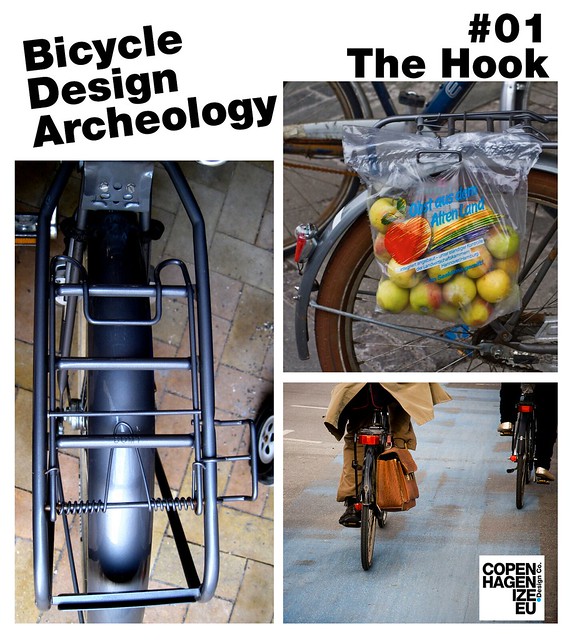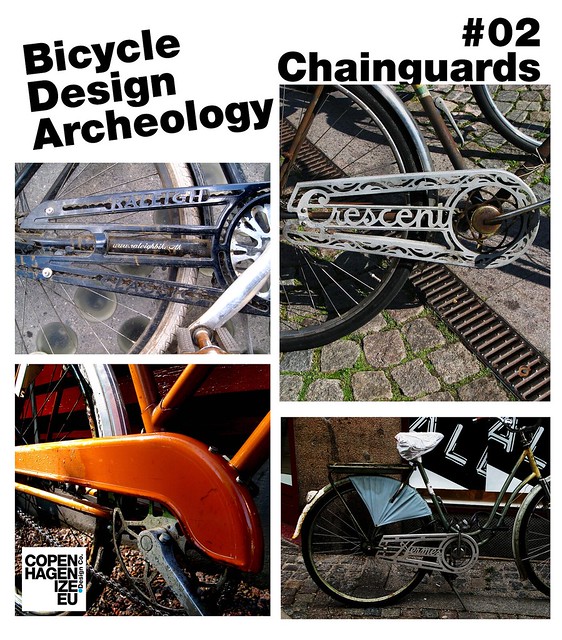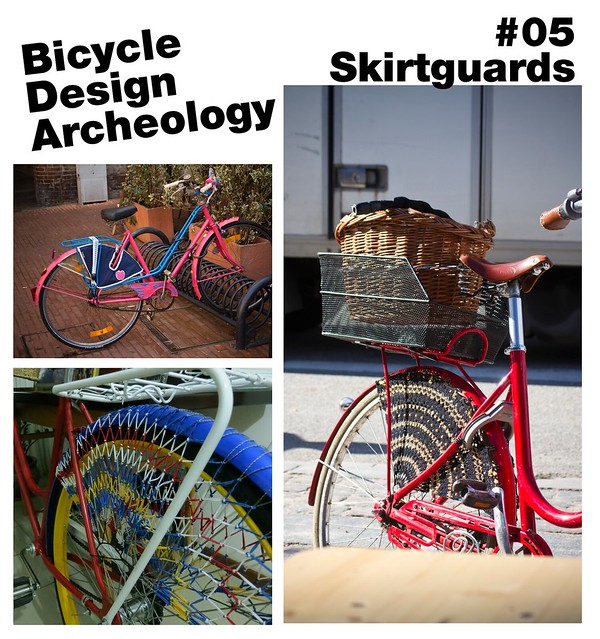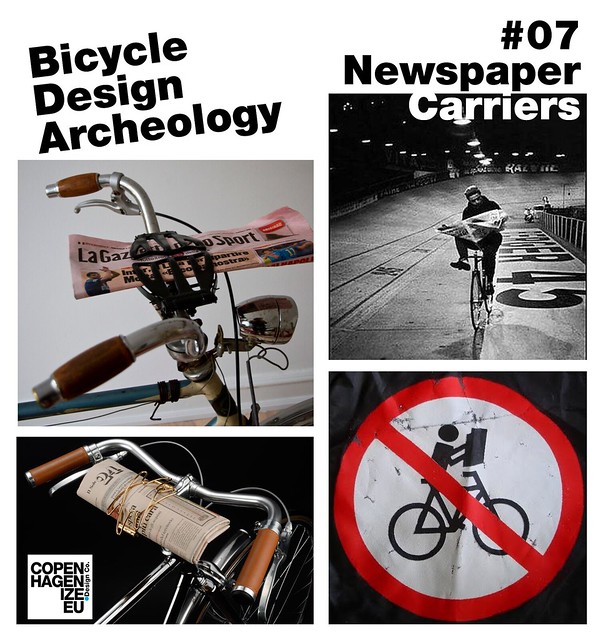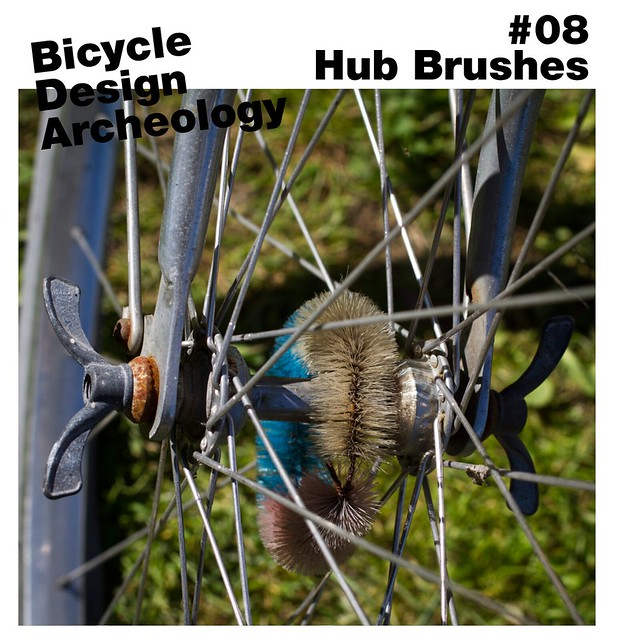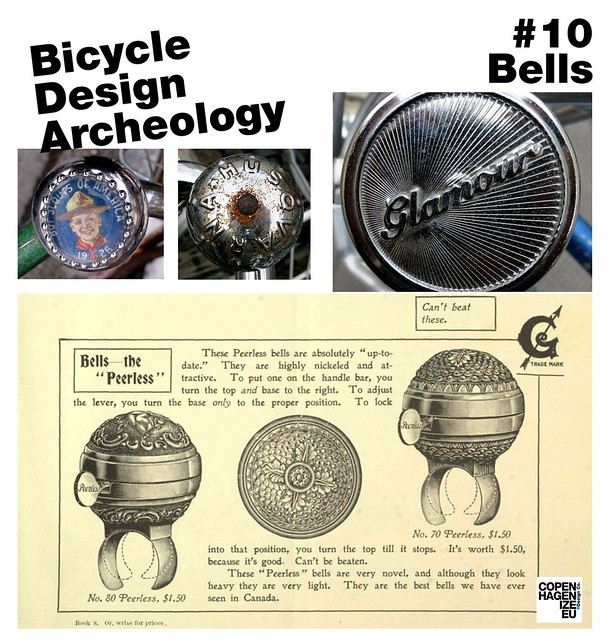
There is an ocean of fantastic and practical design details from over 130 years of mainstream bicycle culture. Many things that used to be completely normal and often standard on bicycles have disappeared off the radar. The reason for it is no secret. As the bicycle as transport was gradually and effectively pushed out of cities as planners continued to make space for cars from the 1950s onwards, the people left riding bicycles were focused on sport and recreation and not much else. The bicycle was relegated from democratic urban transport to … toy. Captain Spandex and his band of “weight wienies” discarded frivolous details faster than rapidly descending hot-air balloonists. Faster, dude! Lighter, man!
Alas. But I decided to go on an archaeological dig and dust off the ten design details that I love — and that I wish were standard once again now that The 99% are returning to bicycles in our cities.
There are basic accessories that remain standard in mainstream bicycle cultures like fenders, chainguards, skirtguards and kickstands. They’re not included here in the general sense because they never really went away — except in regions where cycling for transport was engineered off the streets.
Sure, almost every bicycle in Denmark and the Netherlands and all mainstream bicycle cities have chainguards. Duh. It’s the most obvious addition to a bicycle along with fenders. Riding without one is like skating without blades. The style of chainguards, however, has taken a total nose-dive. Back in the day, every bicycle brand with respect for itself put some serious love into designing their chainguards.
My 1955 Crescent bicycle has a handle on the tube which is wonderfully balanced and makes lifting up the bike easy as pie. Especially vintage Swedish bikes of various brands have this handle, but this was a design detail that was mainstream for a long time. If you didn’t have one welded to the frame (you poor thing), you could buy an attachable one like at top right, spotted on a 1920s bicycle in Ferrara, Italy.
I don’t use mine that often but when I do, I love it. Brilliant thinking. The Danish design principles of Practical, Functional and Elegant are all in play here.
Ah, the dynamo. That clunky, awkward uncle at the family bicycle party but nonetheless charming. Most of the ones you see are vintage these days but they are still being made — like on the new bike at top right. I lament the fading dynamo from a purely aesthetic point of view. A tiny motor that leaned against your wheel and made a reassuring whizzing sound while you pedalled. Not to mention the fact that you could see your effort paying off in the form of a flickering beam of light.
Skirtguards live on and show no sign of going anywhere — just probably not where you are. Another simple but practical accessory that is a must for city living. The word “skirtguard” is a gender-specific, English-language invention. In Danish they’re called “frakkeskåner” — or “coat protectors” because everyone wears coats and most were long, fine coats back in the day.
Like with chainguards, many skirtguards were made with a big dose of design love. Crocheted skirtguards were all the rage in many countries a century ago. I’ve seen them in bicycle museums in many countries — some dating back to the late 19th century. Rubber or elastic skirtguards like at bottom left are still cheap and accessible in Italy and Brazil, among other countries. Newer versions like the one at top left are widely available — and most ladies bikes in Denmark have them included. But damn, there used to be so much more style out there.
These simple rubber attachments to your handlebar served a simple purpose. They protected both the chrome on your handlebar and the wall you leaned your bike up against when parking. This was the design detail I had to spend the most time on. I first noticed them in Italy a few years ago — and saw a lot of them — but I really haven’t seen them anywhere else.
Maybe this design detail is less relevant now that most bicycles have kickstands but hey… at some point in history someone thought this thing up, designed it and had it produced. Simple and elegant.
The safety nannies who whine about cyclists listening to music or checking their smartphones (but who seem less concerned about motorists doing it) will absolutely HATE these. Newspaper holders were popular for many decades in many countries. Always worth remembering the value we placed on our daily paper. At bottom left the design is perfect for carrying your daily paper folded up ever so nicely on your bicycle. The design at top left, however, takes it to the next level. I bought this one in Italy. You can carry your paper but you can also fold it to the article you want and read it whilst cycling. That’s literally what it’s designed for. I actually saw a older gentleman doing this in Ferrara but unfortunately I didn’t have my camera with me. Of course, they even have a name in Italian: “portagiornali” — newspaper carrier.
It was, indeed, a perfectly normal activity back in the day. At top right is a six day race rider going through the motions at night, reading the paper as he goes. You and your teammate had to ride 24 hours a day in the famous six-day races but there was no competitive cycling at night — just going through the motions. If you’re going to check the sports results or read the news while cycling along, keep an eye out for the sign I spotted in the Netherlands, at bottom right.
Once standard all over the place, I’ve only seen the humble hub brush live on here in Copenhagen — where you can still buy them easily at most bike shops— and sometimes in the Netherlands. It just sits there silently, spinning around your hubs as you ride. Keeping them free of grease and grime.
Ah, the simplicity. The practicality. Perfect.
The only real competition for the beauty of early bicycle posters is the art form known as head badges. My goodness, there are thousands of them out there from the past 130 years and most of them are absolutely lovely. Every bike brand worth their salt would put effort into their logo and transfer that to the head badge.
From the simple “H” at top right on a 1930s Hamlet bike in my back courtyard to the engraved details of head badges like the ones from Husqvarna and Wirma at top left. Be still my design heart. And pre-war, they were made of solid metal until aluminum became more mainstream.
The collection at bottom left are all from Latvia alone.
We’re seeing some design love being put back into head badges these days, fortunately. At middle right, Danish brand von Backhaus have upped the ante by sticking one between the frame tubing. At bottom right is an attachable, funky headbadge from a Danish designer.
The art form wasn’t confined to head badges. I have a annual bicycle licence which resembles a head badge, from 1940s Catalonia. You just attached it to your frame somewhere. Still beautiful.
Bells are still around and not going anywhere. Again, again, again, I lament the lost design traditions. Vintage design details on old bells are splendid. Craftsmanship and pride and design process were put into them. Now they rock out of Chinese factories in containers, by and large. With THAT said, there are at least many designs on the market nowadays. Something to fit every taste and inclination. But not that many made from solid metal with a commanding dring dring, ding dong or ding anymore.
BONUS!
Vintage Parking Lock on Husqvarna Bicycle from Copenhagenize on Vimeo.
This is the wheel lock on my 1948 Husqvarna bicycle. Standard back in the day. Stops the front wheel from tilting when parked on a kickstand.
Colville-Andersen at 18:29
